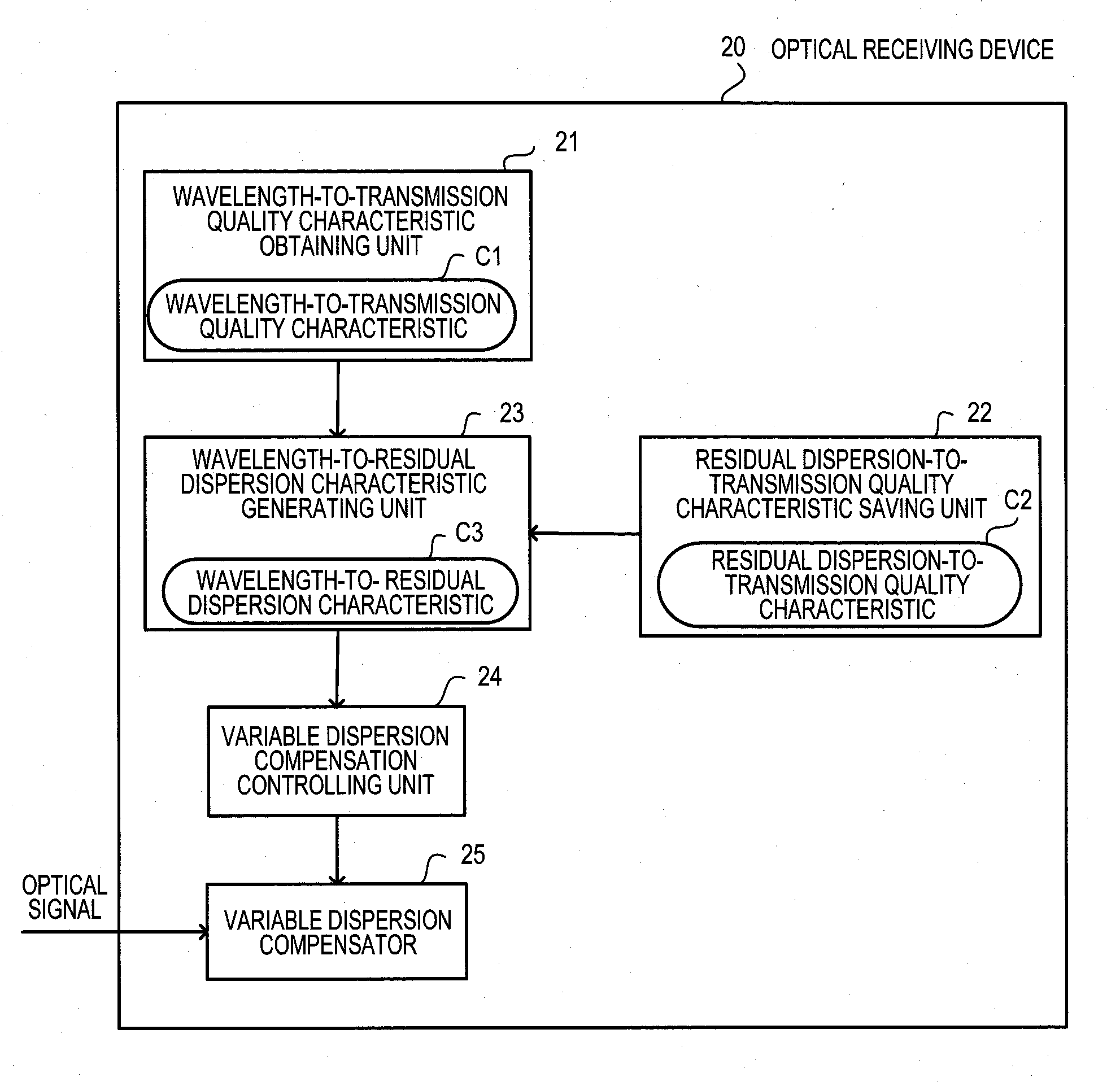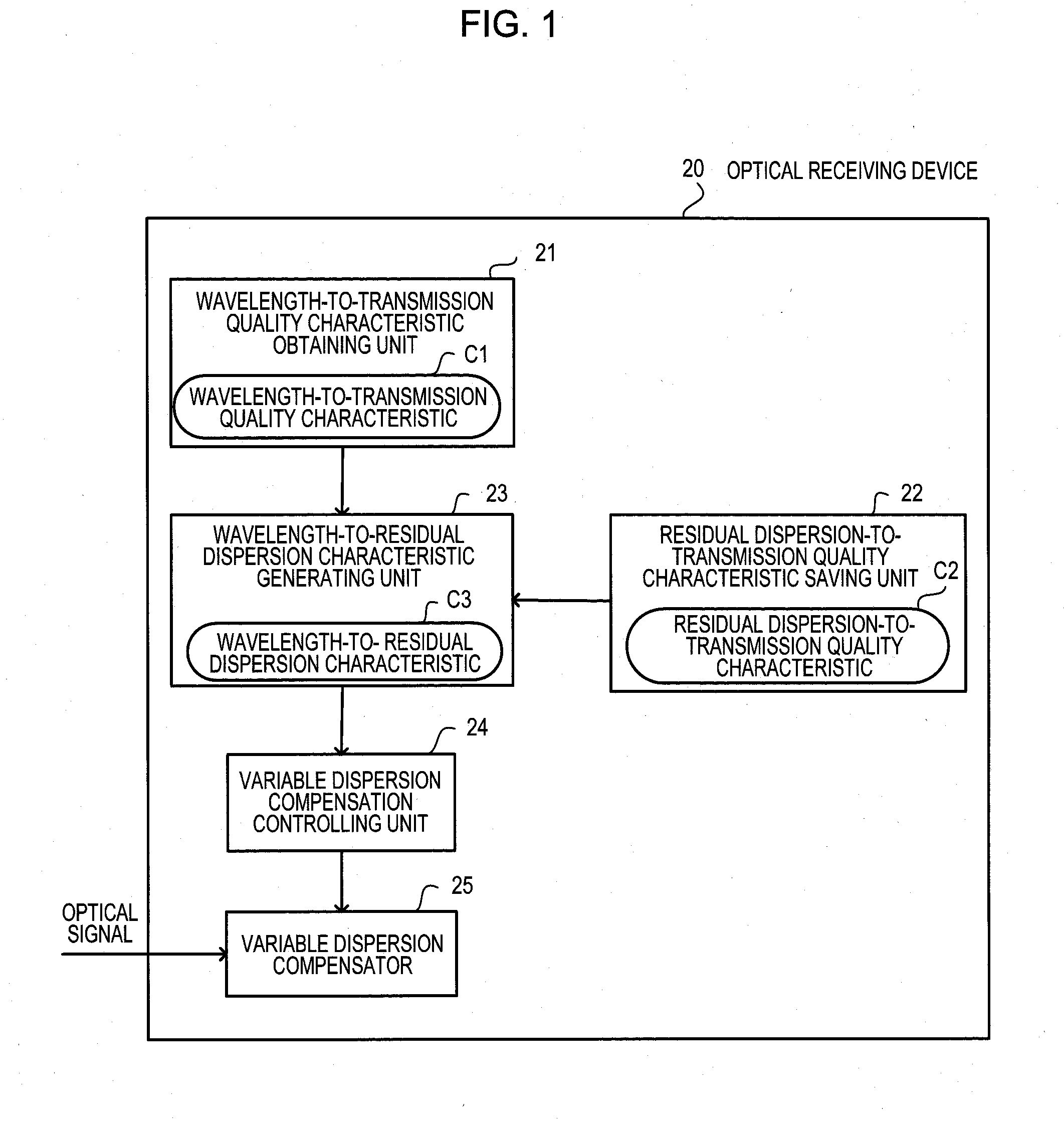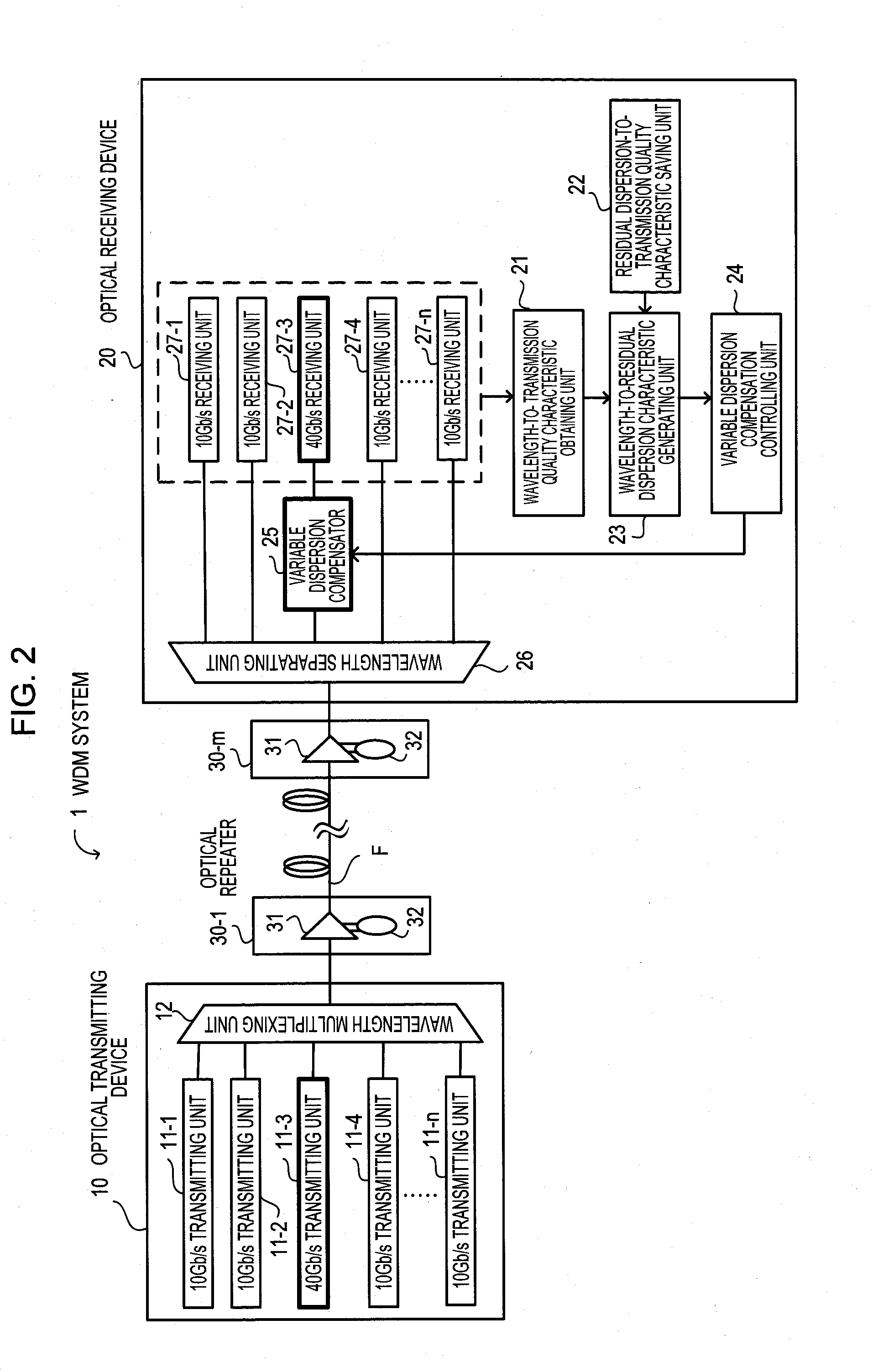Optical receiving device and optical transmission system
a technology of optical transmission system and optical receiving device, which is applied in the direction of transmission monitoring, multiplex communication, wavelength-division multiplex system, etc., can solve the problems of affecting the transmission capacity, and affecting the transmission system
- Summary
- Abstract
- Description
- Claims
- Application Information
AI Technical Summary
Benefits of technology
Problems solved by technology
Method used
Image
Examples
first embodiment
[0052]Embodiments will be described below with reference to the drawings. FIG. 1 illustrates an outline of an optical receiving device. An optical receiving device 20 of a first embodiment is a device for making an optical receiving process by providing dispersion compensation on a WDM signal. The optical receiving device 20 is composed of a wavelength-to-transmission quality characteristic obtaining unit 21, a residual dispersion-to-transmission quality characteristic saving unit 22, a wavelength-to-residual dispersion characteristic generating unit 23, a variable dispersion compensation controlling unit 24, and a variable dispersion compensator 25.
[0053]The wavelength-to-transmission quality characteristic obtaining unit 21 obtains a wavelength-to-transmission quality characteristic C1 that represents a relationship between wavelengths of low speed channels and transmission qualities that are actually measured for the respective wavelengths of the low speed channels by measuring t...
second embodiment
[0096]In contrast, in the second embodiment, it is assumed that a plurality of high speed channels are introduced on the system when low speed channels are replaced by high speed channels. The embodiment is adapted to obtain a dispersion compensation amount of the new high speed channel from information on dispersion compensation amounts set in the already installed variable dispersion compensator.
[0097]FIG. 7 illustrates a configuration of a WDM system. A WDM system 1a is composed of an optical transmitting device 10a, an optical receiving device 40, and optical repeaters 30-1 to 30-m. The optical transmitting device 10a and the optical receiving device 40 are connected with each other by an optical fiber transmission line F. The optical repeaters 30-1 to 30-m are arranged on the optical fiber transmission line F.
[0098]FIG. 7 illustrates a WDM system where WDM transmission is conducted in a mixed state of channels where the first channel and the nth channel are 40 Gb / s channels and...
PUM
 Login to View More
Login to View More Abstract
Description
Claims
Application Information
 Login to View More
Login to View More - R&D
- Intellectual Property
- Life Sciences
- Materials
- Tech Scout
- Unparalleled Data Quality
- Higher Quality Content
- 60% Fewer Hallucinations
Browse by: Latest US Patents, China's latest patents, Technical Efficacy Thesaurus, Application Domain, Technology Topic, Popular Technical Reports.
© 2025 PatSnap. All rights reserved.Legal|Privacy policy|Modern Slavery Act Transparency Statement|Sitemap|About US| Contact US: help@patsnap.com



